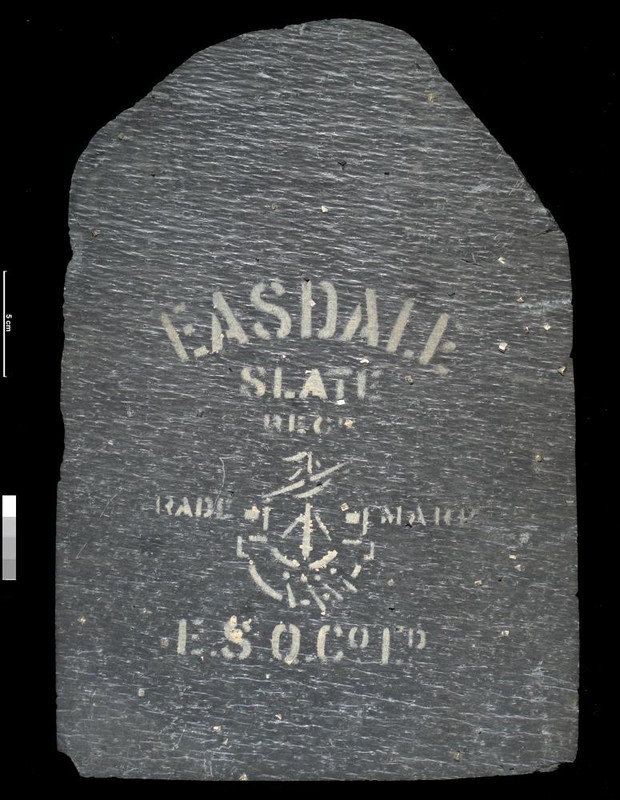Scottish oil is topical. Most of Britain’s oil and gas deposits sit under the seabed around Scotland but the revenues are shared with the whole of the United Kingdom. If Scotland decides to become an independent state (there’s a vote in 2014) then that wealth will be all theirs. So I was very interested to read about a new Scottish oil field that has been discovered. There’s only one reason you’ve not read about this in the papers: all the oil was boiled off 470 million years ago.

Easdale Slate sample. From British Geological Survey, sample P519560
Oil deposits form from dead critters – buried organic matter. Bury this carbonaceous material deep enough (often in black mud) and it heats up and enters the ‘oil window’. These ‘source rocks’ then produce oil which seeps away. In ideal conditions it enters a rock rich in holes (the reservoir) and is prevented from rising further by impermeable rock layers above (the seal).
Most oil deposits are found in more recent rocks, from the last 541 million years where traces of life are everywhere (the Phanerozoic). We know from rare fossils and geochemical evidence that life was abundant before this time, it was just mostly microscopic bacteria or algae. The ‘Cambrian explosion’ is rightly celebrated for the creation of new lifeforms, but its impact is partly due to innovations like hard shells and burrowing in sediment that made ancient life much more visible. It doesn’t necessarily represent a step-change in the raw *volume* of life. Before the Cambrian, there was lots of carbon being ‘fixed’ and sinking into sediment – many oil deposits are found from the next oldest period, the NeoProterozoic (1,000 to 542 million years ago).
Scotland contains sediments of this age: the Dalradian Supergroup. Some clever chaps from the University of Aberdeen thought to look in them for evidence of oil. In their recent paper Timothy Bata and John Parnell focus on rocks from the Argyll Group – the Easdale Slate and the Scarba Conglomerate.
The Easdale slate is a dark rock that even today contains up to 6.3% organic carbon by weight -it was a good candidate for a source rock. The Easdale sediments formed in deep water and the Scarba Conglomerate was the equivalent shallow water deposit. As a coarse pebbly sandstone it would have contained many small holes, up to 11% by volume, and so was a good candidate for a reservoir rock. Today it is strikingly dark in colour because it contains abundant solid hydrocarbon residue – it is a fossil oil reservoir. The residue is found within pore spaces and is associated with pyrite crystals which they interpret as forming from Precambrian bacteria attacking/eating the oil.
These rocks are found across Scotland and Ireland – our authors estimate they could have contained over 6 billion barrels of oil. This find isn’t going to affect the vote for Scottish independence in September though. The Iapetus ocean these sediments were deposited on the edge of is long gone and so is the oil. It wasn’t extracted by cunning trilobites but was destroyed along with the ocean. Around 470 million years ago the sediments were buried and heated to high temperatures – the Easdale source rocks were converted from muds into slates useful in roofing. Only useless degraded hydrocarbons remain, the rest would have been returned to the surface as gas.
Rocks equivalent to the Dalradian might be expected to have similar deposits and these are found from Greenland to North America. Other Precambrian fossil oil reservoirs are there to be found – if you live on lightly metamorphosed Neoproterozoic sediments in eastern North America or in Norway, you might be sitting on the ghost of an oil-field.
Bata T. & Parnell J. (2014). A Neoproterozoic petroleum system in the Dalradian Supergroup, Scottish Caledonides, Journal of the Geological Society, DOI: 10.1144/jgs2013-087

